HR Dashboard Software
What is an HR dashboard?
An HR dashboard is a tool that helps you analyze and understand HR processes, from recruiting to off-boarding. It helps organizations to make quality hires and to retain employees for a long term. With help of the HR dashboards, HR teams can find their reason for attrition, Rev per employee, satisfaction of the employees, quality of the hire and more all in a unified Types of HR dashboards
Candidate Overview Dashboard
This dashboard helps to visualize applicants' data with reports and hire the candidates who best fit an organization. You can also analyze the candidates and reduce hiring costs by selecting candidates who will stay with an organization for the long term.
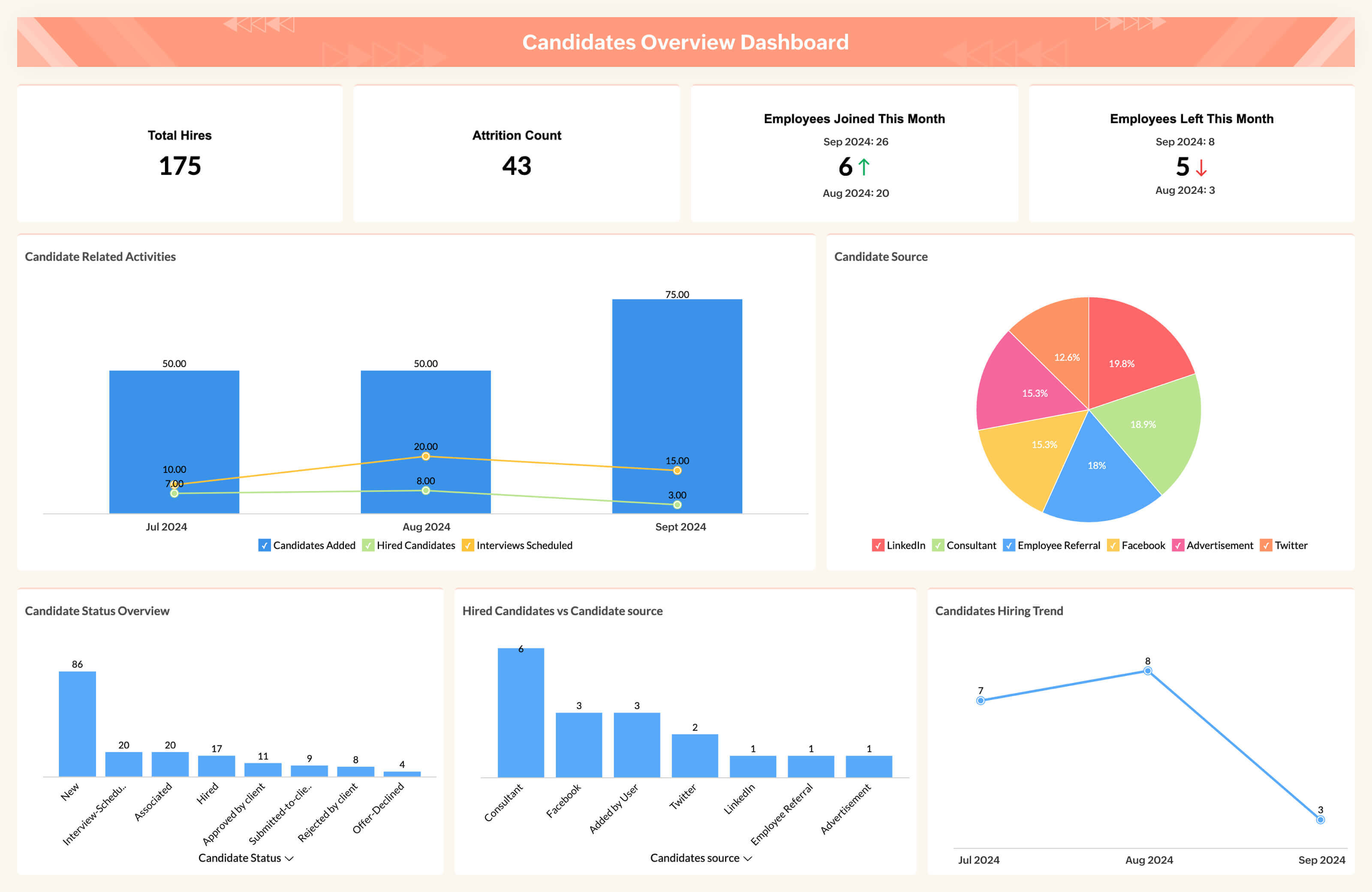
Onboarding Analysis Dashboard
This dashboard enriches your onboarding process by providing a better understanding of the employees and their roles, so that an organization can reduce early attrition.
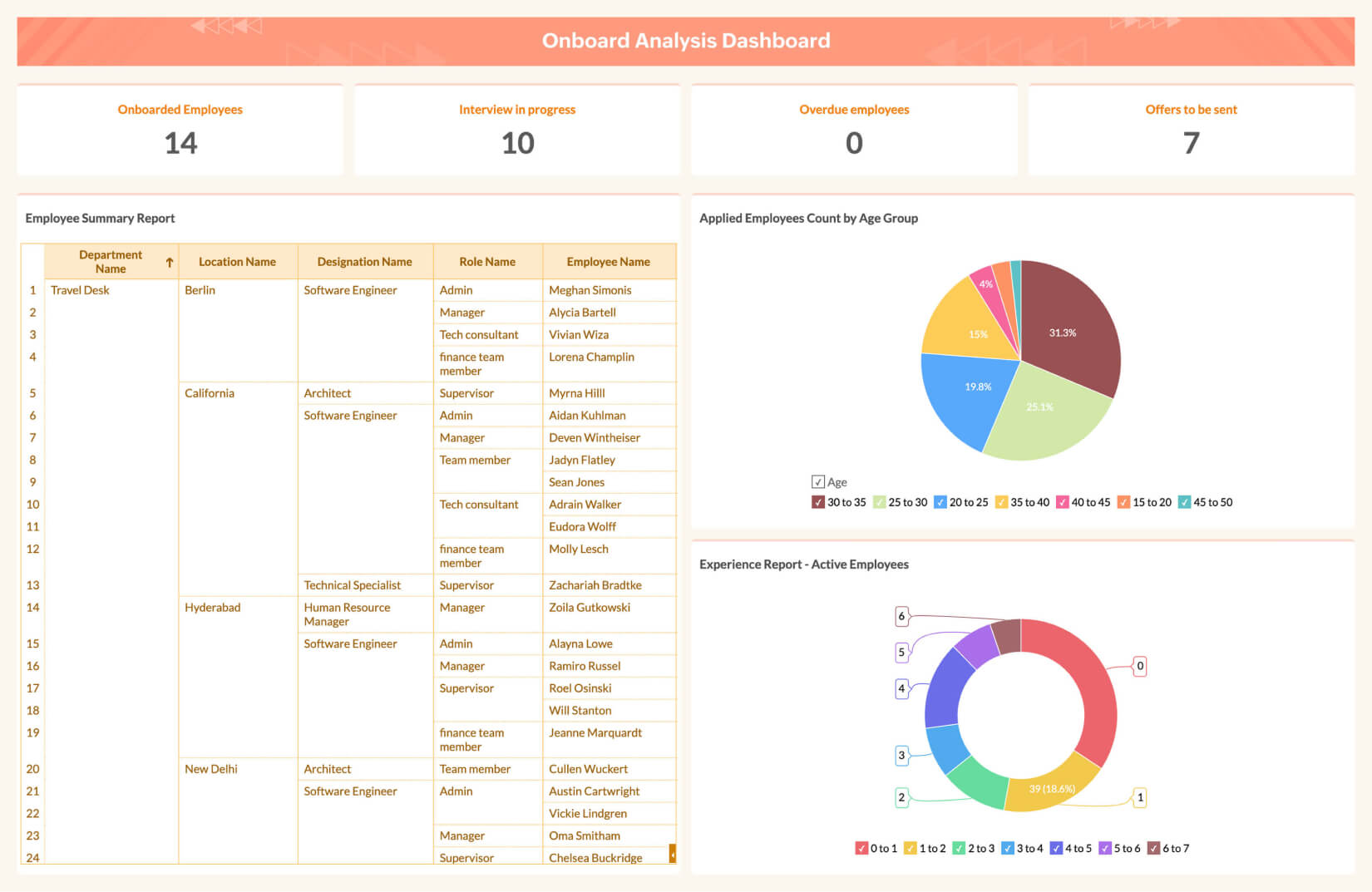
Tasks Dashboard
This dashboard helps to measure the productivity of your employees by tracking attendance and time, and to set alerts when someone runs low on time or attendance.
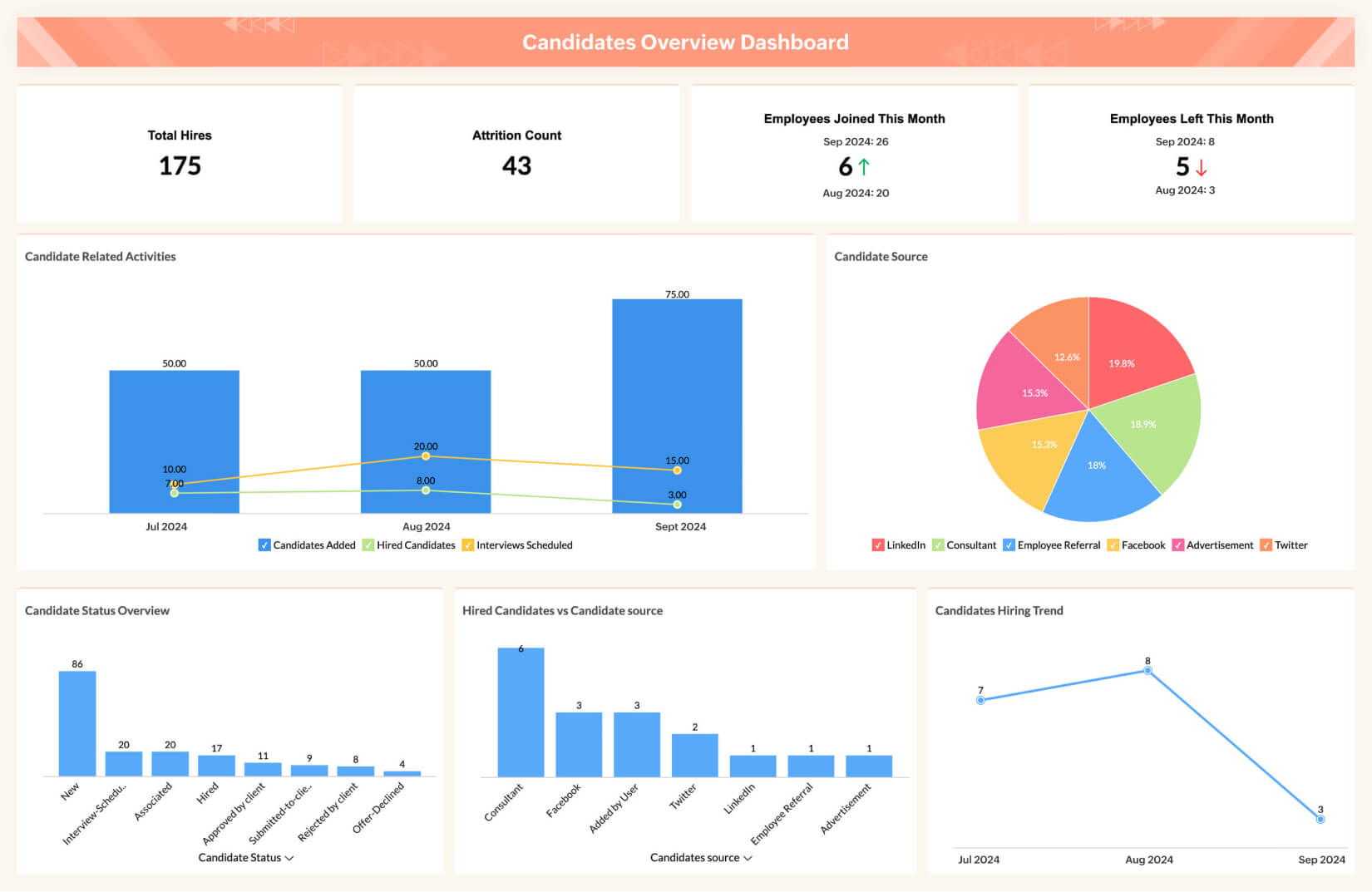
Employee Dashboard
This dashboard increases employee engagement by helping to develop strategies and personalize incentives based on their interests, in order to foster a more rewarding work environment.
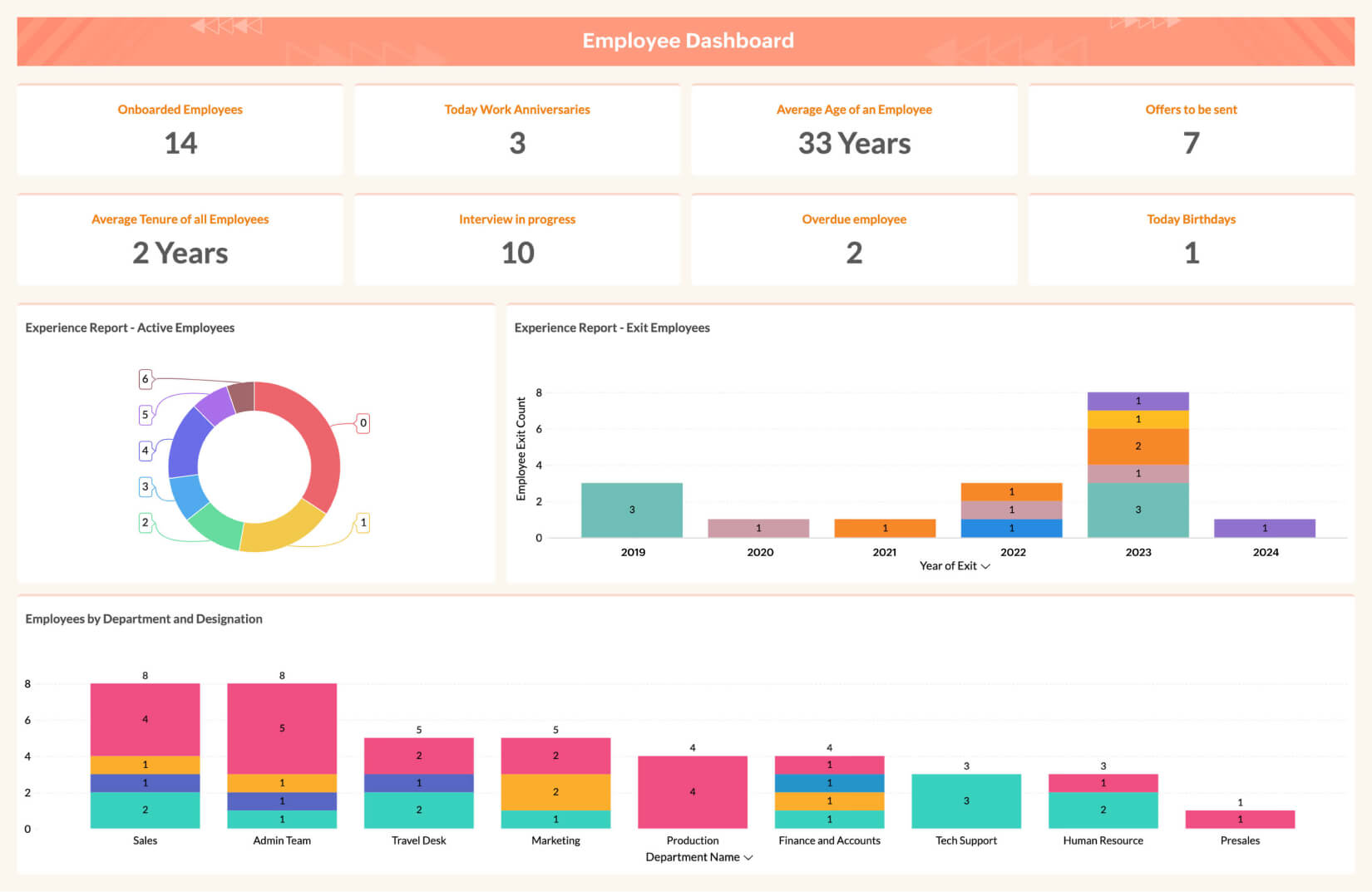
Attrition Analysis Dashboard
This dashboard helps to visualize the trends in your attrition rate and boost or slow down an organization's hiring. You can get in-depth analysis of factors—like the designation, age, and more—of employees in the attrition phase and take necessary actions to replace them.
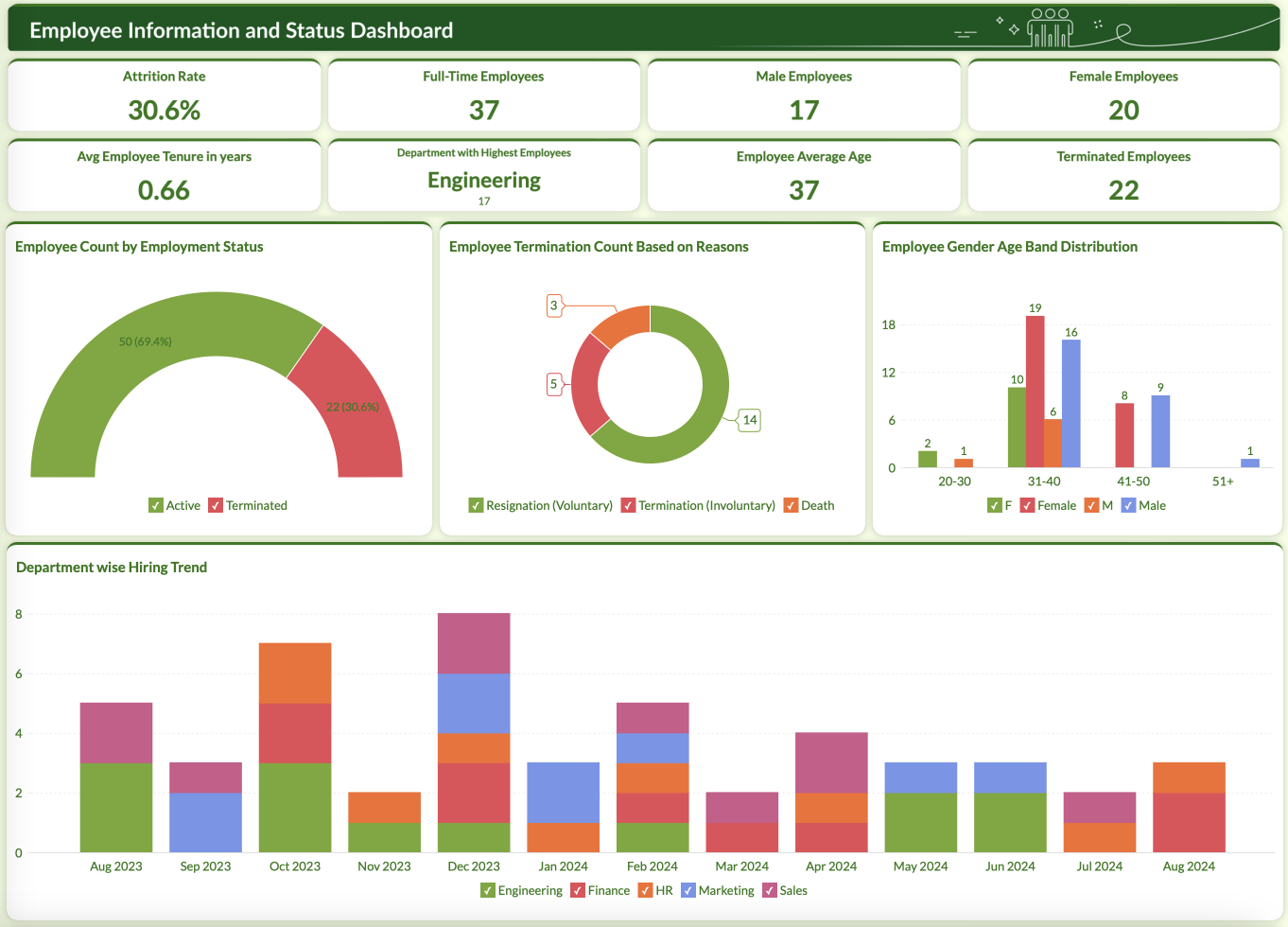
Executive HR Dashboard
This dashboard helps to understand the overall human resources process of an organization. From recruitment to onboarding, employee engagement, employee satisfaction, performance to attrition, exit process, and reason for attrition, it gives end-to-end insights from your HR data.

KPIs to track in an HR dashboard
Employee Turnover Rate:
Calculation: (Number of employees who left during a period / Average number of total employees) * 100
Employee turnover rate is a crucial KPI that sheds light on how quickly employees are leaving the company, which can signal underlying issues with retention and engagement.
Employee Satisfaction Score:
Calculation: Average score from employee satisfaction surveys
To measure overall employee satisfaction, organizations conduct periodic surveys to assess how content employees are with their work, their work environment, and their management.
Absenteeism Rate:
Calculation: (Total number of days absent / Total number of available workdays) * 100
Absenteeism rate is another vital metric that helps organizations understand how often and to what extent employees are absent from work, as this can have a significant impact on productivity and morale.
Cost Per Hire:
Calculation: (Total recruitment costs / Number of hires)
Cost per hire is a metric used to calculate the average expenses incurred in recruiting and hiring new employees, encompassing various costs such as advertising, recruiter fees, and related expenditures.
Time to Fill Vacancies:
Calculation: (Total time taken to fill vacancies / Number of vacancies filled)
Time to fill vacancies measures the average duration it takes to fill open positions within the organization, providing insights into the efficiency of the recruitment process.
Training and Development Investment:
Calculation: Total expenditure on employee training and development
Investment in training and development is evaluated through this metric, which assesses the resources allocated by the organization to enhance the skills and knowledge of its workforce.
Revenue per Employee:
Calculation: Total revenue / Total number of employees
Revenue per employee is a key indicator of workforce efficiency, as it measures the organization's ability to generate revenue per employee, indicating productivity levels.
Employee Engagement Score:
Calculation: Average score from employee engagement surveys
Employee engagement surveys measure the emotional commitment and motivation of employees towards their work and the organization.
Performance Appraisal Completion Rate:
Calculation: (Number of performance appraisals completed / Total number of performance appraisals due) * 100
This KPI tracks the percentage of performance appraisals completed within the scheduled time frame, indicating the effectiveness of performance management processes.
Diversity and Inclusion Metrics:
Calculation: Percentage of diverse hires, Percentage of diverse promotions, Employee demographics (gender, ethnicity, etc.)
These metrics evaluate the organization's efforts in promoting diversity and inclusion within the workforce, reflecting its commitment to creating a more equitable workplace.
Key Capabilities of an HR Dashboard:
Interactive Interface:
Data Integration and Blending:
By consolidating data from various HR applications, the dashboard provides a unified view, offering insights into organizational performance.
Conversational Analytics:
Users can generate reports effortlessly by asking questions, empowering quick decision-making without extensive technical support.
Multi-platform Accessibility:
Accessible across desktop and mobile devices, the dashboard ensures users stay informed on-the-go.
Sharing and Collaboration:
Facilitating easy sharing and collaboration of to enhance organizational effectiveness.
HR dashboard templates
What Makes Zoho Analytics the Best HR Dashboard Software?
Zoho Analytics stands out as a powerful, user-friendly HR dashboard software to transform raw workforce data into actionable insights. Here’s why it’s trusted by HR teams across industries:
- Unified HR data analysis - Seamlessly integrate data from various HR systems to eliminate silos and gain a holistic view of your workforce.
- Ready-to-use dashboard templates - Access a wide range of prebuilt dashboards for key HR areas and start tracking essential KPIs right away.
- AI-powered insights with Zia - From forecasting attrition to identifying skill gaps, Zia helps HR teams make faster, data-backed decisions.
- Self-service, collaborative analytics - Empower HR professionals to build and customize their own reports with an intuitive drag-and-drop interface. Share dashboards securely and collaborate in real time across teams.





